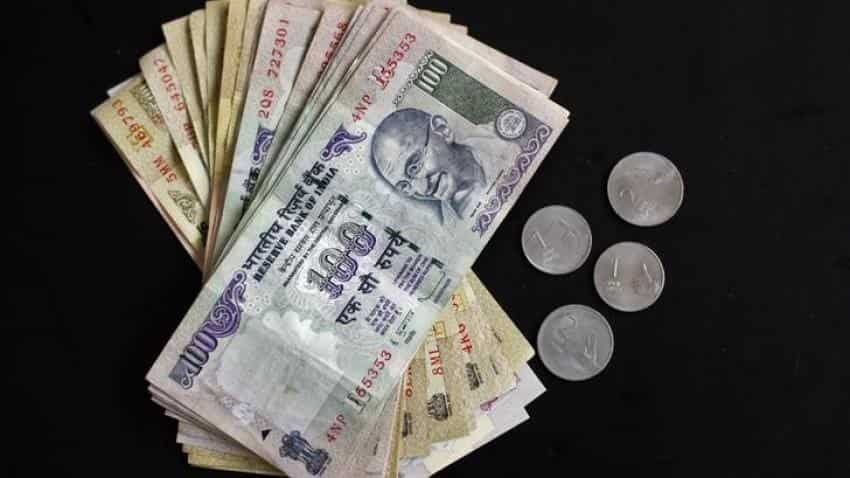The financial year 2016-17 (FY17) was no different for the India's banking system as it continues to suffer from single-digit loan growth, weak net interest income (NII) and lack of resolution to its non-performing assets (NPAs).
Reserve Bank of India (RBI), in its report "Bank Lending and Loan Quality: The Case of India" explained that a one-percentage point increase in loan growth is associated with an increase in NPAs over total advances. Furthermore, NPA ratios of banks are found to be sensitive to the interest rate environment and the overall growth of the economy.
A total of 35 banks – involving 21 public sector banks (PSBs) and 14 private banks, have released their financial audit for the last quarter of FY17 (Q4FY17).
Data from these banks reveal that reduction in deposit rates and MCLR worked well for private banks with higher margins compared to public sector banks (PSBs).
Marginal cost of funds lending rate (MCLR) refers to the minimum interest rate of a bank below which it cannot lend, except in some cases allowed by the Reserve Bank of India (RBI).
During January – March 2017 period, the base rate of banks came down from a range of 9.3 – 9.7% to 9.1% - 9.6% while the MCLR reduced from 8.95% to 7.75 – 8.20%.
As on fortnight May 12, 2017, the bank credit growth stood at Rs 76.28 crore, rising sequentially by 0.83% from fortnight of March 17, 2017 where it stood at Rs 75.65 crore.
Meantime, the one-year bank deposit rate has decelerated to 6.5 - % as on March 2017 from 7 – 7.5% in FY16.
Here's how reduction in MCLR rate and deposit rate played their role in Q4FY17 for banks.
As per data provided by Care Ratings, growth in interest income of 35 banks was slightly higher in Q4FY17 at 3.6% compared to 3% in FY16.
Madan Sabnavis, analyst at Care Ratings explained that growth in interest income was due to combination in lower growth in credit as well as lower interest rates as banks had lowered their MCLR by almost 100 basis points during Q4 period.
He added,”With these lower rates translated into the retail leaning business which was growing faster, interest income tended to get affected”
On the other hand, interest expenses declined by 1.1% in Q4, which as per Care Ratings may be attributed more due to the decline in deposit rates by 75 bps.
Private banks had driven the overall growth in bank credit by 15% in FY17 – taking interest income higher by 7.8%
Such performance resulted in nearly 16% rise in NII of private banks to Rs 28,615 crore in Q4 compared to Rs 24,741 crore a year ago same period.
In case of, PSBs, interest income was slightly positive at 2.1% growth in Q4FY17, as against negative growth of 1% in Q4FY16.
PSBs has lost share in total credit over the last three time periods. Outstanding credit as on March 2017 which stood at Rs 78.81 lakh crore – involved PSBs share of 71.5% lower compared to their share in 73.8% in FY16 and 77.4% in FY17.
NII of PSBs witness growth of 12.72% at Rs 50,988 crore in Q4FY17 versus Rs 45,234 crore of Q4FY16.
This indicates very clearly that business levels of PSBs have been impacted by the NPA issue. However, interestingly, their share in gross NPAs has actually come down albeit gradually to 87.4% in Q4FY17 from 90.8% Q4FY16.
Crisil Research said, “We expects bank credit growth to remain muted at 8-10% in fiscal 2018, led by low industrial capital expenditure and continued refinancing through bond markets. Retail sector growth will continue to show higher growth as consumption demand gradually picks up and cost of borrowing falls."
08:47 AM IST







 India must address banking sector crisis to support investment, inclusive growth agenda: IMF
India must address banking sector crisis to support investment, inclusive growth agenda: IMF  Now, IVRCL rivals the biggest NCLT cases at Rs 13,000 crore
Now, IVRCL rivals the biggest NCLT cases at Rs 13,000 crore Government nominee not available on Loan Sanction Committees of banks: Sources
Government nominee not available on Loan Sanction Committees of banks: Sources PSBs should reduce exposure to infra sector - if not completely avoid it
PSBs should reduce exposure to infra sector - if not completely avoid it Indian infrastructure makes steady progress, creates investment climate
Indian infrastructure makes steady progress, creates investment climate